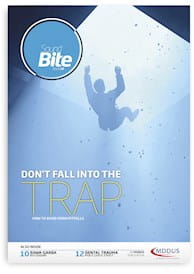
IT is unusual for the higher courts to hear claims arising out of professional regulation and clinical negligence, particularly those of relevance to medical or dental practice. There have been two such cases in recent months, one in the Court of Appeal and the other in the Supreme Court.
The sad story of Jack Adcock and Dr Hadiza Bawa-Garba has been widely reported and debated. In summary, a six-year-old boy with a complex medical history was admitted to hospital dehydrated and unresponsive. He died later the same day after a series of errors, some made by individuals and others resulting from the system the staff were working in.
Jack had been suffering from pneumonia which evolved into sepsis and this was not identified correctly. Sepsis progresses very quickly in a child. Dr Bawa-Garba and nurse Isabel Amaro were subsequently convicted of manslaughter by gross negligence. Nurse Amaro was erased by the Nursing and Midwifery Council and Dr Bawa-Garba was suspended by the General Medical Council (GMC), a decision that was recently confirmed in the Court of Appeal.
What emerged from the Court of Appeal judgment is that the criminal court and the Professional Conduct Committee are "different bodies with different functions making different decisions at different times". It does not automatically follow that a serious criminal conviction will result in erasure.
Darnley case
The claim of Matthew Mark Junior Darnley made against a hospital Trust arose following an assault in which Mr Darnley sustained a head injury. He was taken to A&E where he told the receptionist that he had sustained a head injury and he felt unwell. It was accepted that Mr Darnley had been told he would have to wait some four or five hours to be seen. Mr Darnley told the receptionist he felt close to collapse but was informed that if he did collapse he would be seen as an emergency.
Nineteen minutes after arriving in hospital, Mr Darnley went home without notifying staff. His condition deteriorated and an ambulance was called. During the journey to hospital he collapsed, suffering a large extra-dural haematoma with a midline shift. In spite of surgery Mr Darnley suffered a significant brain injury and has been left seriously disabled.
The claim was made that the non-clinical receptionist breached her duty of care by giving incorrect information and, but for that breach of duty, Mr Darnley would have had a scan much earlier and the surgery would have been carried out earlier, with a significant chance of success.
In overturning the decisions of the lower courts, the Supreme Court found that the Trust had a duty of care to the patient as soon as he was booked in, and it did not distinguish between clinical and non-clinical staff. It found that the failure to tell Mr Darnley that he would be seen by a triage nurse within 30 minutes (rather than being told he would have to wait four or five hours to see a doctor) was a breach of the duty of care because the information was incomplete and misleading.
Dental implications
So how can these two sad stories be interpreted for dental practices? While the circumstances in dental practice are highly unlikely to mirror the problems faced by Dr Bawa-Garba, nurse Amaro and Jack Adcock, some lessons can be learned. The situation with Mr Darnley is more likely to happen.
Effective systems
Dental practice receptionists are often not clinically trained but part of their role is to assess the urgency of a patient’s request for an appointment. We learn from these two cases that it is important that the practice has effective systems in place to properly assess and manage requests for emergency assistance.
Patients can present for urgent care with a dental abscess that is potentially life threatening because the airway is at risk and as a result of the infection the patient may go on to develop sepsis. The whole team needs to be aware of these risks and have a plan for managing the patient, from the first phone call or walk-in. Patients must be given the correct advice, and if the receptionist is in doubt, there must be a system in place that someone with clinical training can speak to the patient and carry out the necessary assessment and triage. This is even more important when the first contact is by telephone.
Systems should be in place for a rapid assessment and referral to hospital where appropriate. The assessment should include baseline medical observations: pulse, temperature and possibly blood pressure. Similarly, when faced with acute dental trauma cases, a plan for rapid assessment and management should be in place. Each team member has a role in both types of case, even if that is simply documenting the notes and comforting the relatives.
Well rehearsed
The nearest to the Dr Bawa-Gaba situation is an acute medical emergency in the dental surgery. The dental team often has the advantage of an up-to-date medical history and list of medications, but that may not always be the case, especially if the unknown companion of the patient collapses in the waiting room.
A well-rehearsed drill should follow, with a scribe capturing the times and key steps taken, liaising with the ambulance service to ensure a safe transfer to secondary care. Imagine that a new team member was the only other person present when the patient collapsed and they didn’t know where the oxygen and emergency drugs were kept, nor the exact address of the practice to tell the 999 operator. Whilst it might not amount to manslaughter by gross negligence, HM Coroner and the relatives would be asking some searching questions in the subsequent investigation.
Speaking up
What steps can an inexperienced member of any team do to protect themselves and their patients from a disaster as outlined in the examples above? First and foremost, speak up. No one should be treated badly for saying “I don’t know” or “help, what should I do?”. Team leaders and senior members of the team should ensure that in any given situation no one is expected to operate outside their level of competence.
In the examples given above, medical emergency care should be practised with the whole team, including non-clinical members, so that everyone has a basic competence in life support techniques. Lifelong learning is crucial, but it has to start somewhere and no one has special skills without starting at the beginning.
Key lessons
- Have a clear plan in place to rapidly assess and refer patients who require urgent care.
- Ensure the entire practice team – including non-clinical staff – are familiar with this plan and act only within their competence.
- Encourage staff to speak out.
- Induction and training logs are crucial to an investigation, as are the contemporaneous notes of any interaction with a patient in distress.
- A confident leader is a leader who is present and welcomes challenge and debate from their teams.
Stephen Henderson is a dental adviser at MDDUS
(This article is adapted from one originally published in the BDJ)
This page was correct at the time of publication. Any guidance is intended as general guidance for members only. If you are a member and need specific advice relating to your own circumstances, please contact one of our advisers.
Read more from this issue of Insight Primary

Save this article
Save this article to a list of favourite articles which members can access in their account.
Save to library